This lesson is a great way to introduce the 6 Cs of Education learning skills to your students and to set the tone for a year of growth mindset and perseverence:
The Six Cs are a bunch of transferable skills that you can use at school, at home, at a job… pretty much anywhere. They’re learning skills that some people think our students are going to need in order to be successful in the 21st century.
This lesson includes 6 fun icebreakers to play with your class during the first weeks of school.
In this package, you get over a week’s worth of lessons to do (6 periods of material). Each ice breaker is intended to fill one period of instruction. Each icebreaker lesson includes:
- an explanation for teachers of how the icebreaker connects to one of the Six Cs.
- a description of the activity for students,
- discussion questions and teacher talking points to guide conversation
Here are the six icebreakers we carefully selected to line up with the 6 Cs of Education.
- Character (Human Knot)
- Citizenship (Switch Spots if you…)
- Collaboration (Human Shapes)
- Communication (Line Up)
- Creativity (Boggle Brainstorm)
- Critical Thinking (Build a Tower)
There are lots of ways you could use these Six Cs Introduction Icebreakers with your students:
- Homeroom teachers could do one of these activities at the end of every day during the first week of September.
- Literacy teachers could do these activities at the start of the term and collect some diagnostic information about their students abilities in oral communication and group work.
- Your school could organize a fun Welcome Back to School event.
- At a morning assembly, after the Principal welcomes back the students, do the Six C unit overview presentation to introduce the Six Cs to the student body. (The Unit Overview lesson is provided for free here: https://educircles.org/resources/exploring-the-six-cs-unit-overview-lesson/
- Students could then visit 6 workshop stations throughout the day.
- Each workshop would focus on one of the Six Cs and could use the icebreakers from this package.
- The teacher running the workshop would use the lesson plan to teach the “C” to different groups of students throughout the day. (Using the lesson plan from this package means teachers don’t have to prepare anything new for the first day event. All of the materials will be provided to them. That way, they can focus on preparing their material for their own classes.)
- During the rest of the week, literacy teachers or homeroom teachers could do deeper conversations of the Six Cs with their classes. (But, a consistent and systematic initial overview of the Six Cs would be provided to all students on the first day.)
When you download the zipped file, it includes:
- A Microsoft Powerpoint (PPT) file (that you can modify)
- A link to the Google Slideshow file (that you can copy and modify)
- A 23 page lesson plan (PDF)
NOTE: This lesson is part of a larger unit.
- The Unit Overview is free and part of Lesson 1 (Character Ice Breaker) is free so you can see the quality of our work.
- The other lessons can be purchased individually, or you can purchase the entire unit at a discount. Visit our TpT store or our website https://educircles.org/resources/ for more information.
Here’s the entire Exploring the Six Cs Unit
- Unit Overview (FREE)
- Lesson 1. Intro Ice Breakers (THIS LESSON)
- Lesson 2. Character,
- Lesson 3. Citizenship,
- Lesson 4. Collaboration,
- Lesson 5. Communication,
- Lesson 6. Creativity
- Lesson 7. Critical Thinking
- Lesson 8. Review / Assessment
WANT a FREE PREVIEW of this lesson plan before you buy it?
What does this mean?
- It means you get the first part of this paid resource for free (Character ice breaker lesson plan and slideshow) so you can see the quality of our work.
- We’ve blurred out the rest of the resource in this preview because we think you’ll like what you see and you’ll want more.
Why are we doing this free preview?
- Because some teachers are nervous about buying online resources. They’re not completely sure they’re getting their money’s worth. Everything in this zipped file is exactly the same as the paid version… What you see is what you get… except the paid version isn’t blurry!
- Because you don’t know me. I don’t teach down the hall from you, so you don’t know the kind of teacher I am. This gives you a chance to see the passion and care that went into this lesson. Quite frankly, this is a cool slideshow. And the discussion questions are awesome.
- Why don’t you give away the entire resource for free? That is an excellent question! Read our response: https://educircles.org/why-dont-you-give-away-everything-for-free/
Where can I buy the full resource?
This resource (and others like it) can be downloaded from our Teachers Pay Teachers download site (We sell on TpT) (We sell on TpT).
Exploring the Six Cs – Lesson 1. Intro Ice Breakers – FREE LESSON PLAN version
Let’s get excited about the Six Cs.
- This introduction is supposed to be a taste of the different sections.
- The point of this lesson is to do some fun activities that are connected to each “C”, but without spending a lot of time explicitly going into deeper conversations and definitions. (We’ll do that later in the next 6 lessons on each individual C.)
LESSON GOAL
- Bring everyone together in ice-breaker style activities – co-operative group / team activities.
- Recognize that the Six Cs are interconnected, yet separate – there’s a fine line between all of them.
TEACHER TIP: You’ll notice throughout the activities there are lots of photo opportunities for those of you who send home parent emails.
CONNECTING TO THE UNIT BIG PICTURE:
By the end of this lesson, students will be able to start to
- Understand / Explain the six Cs of Education and Deep Learning (Learning Skills):
- Character,
- Citizenship,
- Collaboration,
- Communication,
- Creativity, and
- Critical Thinking.
- Analyze the similarities and differences between the six Cs.
(Possible) CURRICULUM LINKS in this lesson
The six Cs are a great way to connect to character education and learning skills. Depending on where you teach, you may be able to connect it to the English / Language Arts curriculum as well. Some possible connections to the Grade 8 Language Arts Ontario Curriculum are made below to give you ideas:
- Oral Communication (from the activities / think / pair / share conversations)
- Active Listening Strategies (ONT LA 1.2): demonstrate an understanding of appropriate listening behaviour by adapting active listening strategies to suit a wide variety of situations, including work in groups
MATERIALS
- PowerPoint slideshow or Google Slides Presentation
(Download from zipped file. See Read Me note for help.) - Ice Breaker Activity #5 Creativity – Boggle Brainstorm
- Students need to write in their groups. (Class divided into groups of 2-3 students)
- Option 1. Student provides their own paper and pencil
- Option 2. Teacher provides 1 flipchart and 1 marker (per group)
- Students need to write in their groups. (Class divided into groups of 2-3 students)
- Ice Breaker Activity #6 Critical Thinking – Tallest Free Standing Tower
- Newspapers (or flipchart paper, or other large paper you have at your school)
- Masking Tape
Introduction
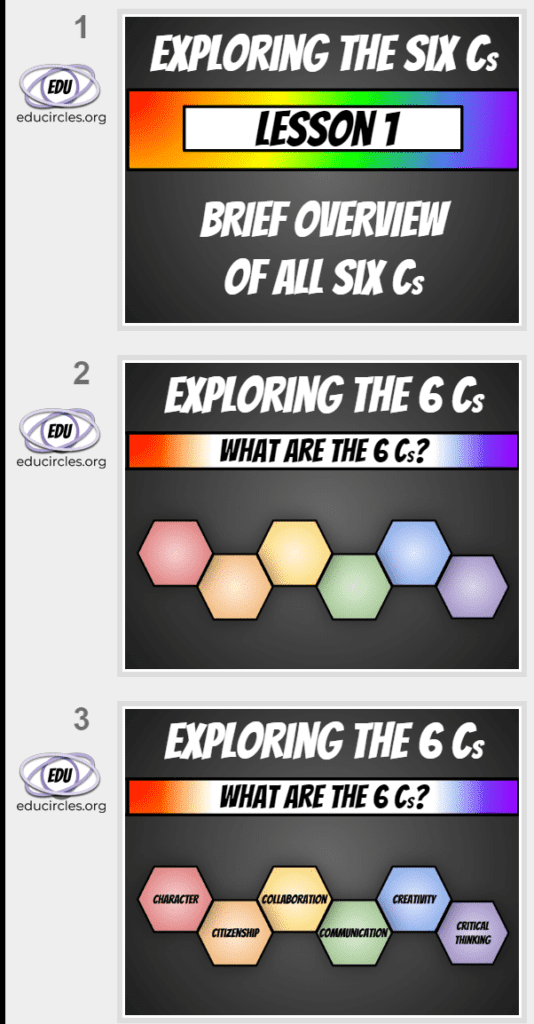
What are the “Six Cs”? Does anyone remember from last class?
The order doesn’t really matter, because they’re all kind of connected. But just to help organize our thoughts, we’ve colour coded the Six Cs and put them into alphabetical order…
- Character (RED)
- Citizenship (ORANGE)
- Collaboration (YELLOW)
- Communication (GREEN)
- Creativity (BLUE)
- Critical Thinking (VIOLET)
Minds On!
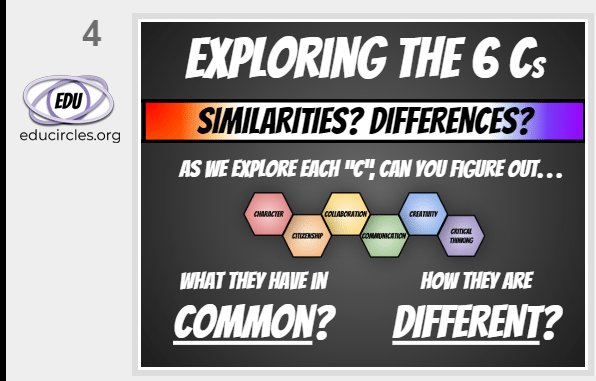
As we explore each “C” of Education today, the big question is can you figure out
- What they have in common?
- How are they different from each other?
The point of this lesson is to get a sense of these transferable skills.
- Remember, these are “21st century skills” – they can help us learn in the classroom, work with other people, and overcome challenges in life.
- They’re called “transferable” skills because you can “transfer” these skills from the classroom, to your job, to your personal life, etc.
MINDS ON:
Before we do some activities, lets start to think about these hexagons. If you could move these hexagons around and group them together…
- Which of these Six Cs do you think go together? (i.e. at first glance, they look like they mean the same thing, or they have a lot of similarities.) Why would you group them together?
- Which of these Six Cs do you think are opposites or completely different?
At this point, there’s no right or wrong answer. The goal is to get students to start to think about connections between the Six Cs, instead of only thinking about them in isolation…
Sample teacher prompts:
- What do you think “collaboration” is? What does it have in common with “communication”? What do you think is the difference between “Collaboration” and “Communication”?
- What do you think “Character” is? What do you think “Citizenship” is? What do they have in common? What do you think is different between them?
- What about “Creativity”? What do you think “Critical Thinking” is? What could “creativity” and “critical thinking” have in common? How could they be different?
TEACHER TIP: You could do this as a “think, pair, share” activity.
- Ask the question and give students 30 seconds to silently and independently think about the answer.
- Next, turn to their elbow-partner or get into groups of 2-3 and share answers.
- Finally, facilitate a whole-class conversation where students raise their hands and share what their little group was discussing.
ICE BREAKER ACTIVITY – 1. Character

The first “C” we’re going to look at is “Character.”
MINDS ON: Similarities & Differences. (Two minute quick conversation)
- What do you think “Character” is? Why? What does “Character” look like?
- Which “C” do you think “Character” is going to be most similar to? Why?
- Which “C” do you think “Character” is going to be very different from? Why?
(Student answers will vary. The goal is to start figuring out similarities and differences.)

ACTIVITY: Human knot
BASIC IDEA:
- Students stand in a circle and hold hands with two different people on the other side. Their group then has to untie the “human knot” without letting go.
Why did we choose this activity for “Character”?
- Human Knot is a great icebreaker because it gets students moving and interacting with their fellow classmates.
- There is a little element of competition because the class is divided into two groups trying to unravel the human knot.
- Inevitably, the groups don’t want to “fail” (and not unravel the knot.) Also, most groups want to be “first” to win.
However, this is more than an ice-breaker. It’s an opportunity to demonstrate perseverance and character.
- After the teacher gives out general instructions and the groups start to try to untangle, it’s important for the teacher not to suggest solutions or be the enforcer of rules. (Of course, common sense dictates and teachers know their students best and will act to ensure students are safe. Depending on the grade, more or less support might be required.)
- The real question is what do people do when we’re faced with adversity and frustration because we can’t untangle the knot…
- Do we encourage? Do we problem solve? Do we find ways to put it in perspective and stay positive?
- Do we blame others? Do we cheat? Do we give up?
- What does success mean?
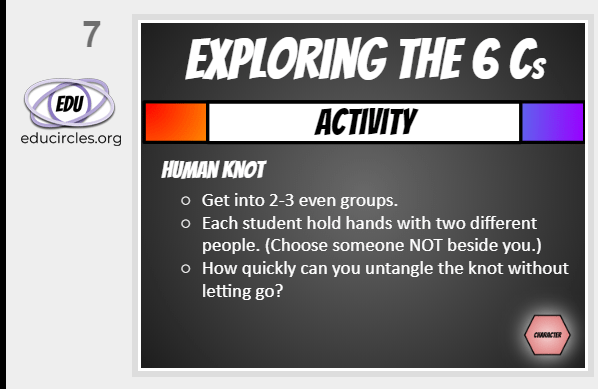
Get into 2-3 even groups.
- Generally speaking, this works best by splitting the class into 2 groups, because if you lose, it’s okay because so did half the class. (If you have a lot of smaller groups, one of the groups might feel bad for losing.)
- Having said that, in a class of 36 students, a human knot of 18 people might be physically impossible. Then again, maybe not.
Each student hold hands with someone who isn’t beside them.
- This is important, because otherwise, it’s easier to solve the knot if you’re holding your elbow-partner’s hand.
- Students need to make sure they’re connected to different people, otherwise they might splinter off into multiple tiny knots. (This may happen anyway if 3 friends end up holding each other’s hands.)
How quickly can you untangle the knot without letting go?
TEACHER TIP: A stopwatch can create some fun competition.
SAFETY FIRST
- Your students may need reminders about going slowly and respecting classmates to make sure people don’t get pulled or hurt by accident.
- Depending on the age of the group, you might need a rule that it’s okay to let go and reconnect with the same hand so that people don’t get hurt. Having said that, we’ve seen some spectacular problem solving when we’ve told older students not to let go and reposition their hand, but instead to move slowly.
CULTURAL SENSITIVITY AND PERSONAL SPACE
- You know your students best in terms of how this activity might need to be modified or constructed to ensure everyone has a positive and inclusive experience.

TALKING POINTS: Character
Groups may not be able to untie, and that’s okay. The important conversation is about what strategies did they try? What worked or didn’t work? What could they try to do differently next time?
- What is cheating? Does it count as a win, if you cheat? Is there ever a time to cheat?
- Part of character is the ability to show persistence in the face of difficulty. What do you do when things get tough?
- But part of character is also having the empathy to understand yourself, and others. Is it important to untie the knot – even if it means someone is not having fun, or is getting pulled along
- How do we find and develop strategies to meet our goals?
After this discussion, if time permits, try again.
- Groups can stay the same, to try different strategies to see if they can beat their previous time.
- or groups can be switched up to try different interactions and strategies.
- Or try an entire class human knot and see what happens.
(OPTIONAL) DEBRIEF Similarities & Differences. (Two minute quick conversation)
Depending on your class and amount of time you have in class, some teachers will choose to skip the debrief to keep things moving and fast paced. Other teachers might take the time to debrief the activity and reconnect with the big question about similarities and differences between the Six Cs.
- Based on this activity, what do you now think “Character” means?
Now that we’ve done this activity, has your answer changed to the following questions:
- Which “C” do you think “Character” is going to be most similar to? Why?
- Which “C” do you think “Character” is going to be very different from? Why?
ICE BREAKER ACTIVITY – 2. Citizenship
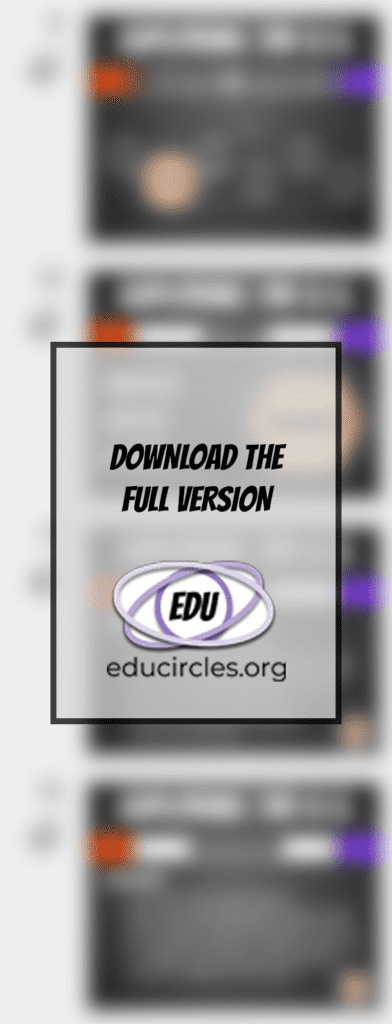
DOWNLOAD THE FULL VERSION to unlock this activity.
ICE BREAKER ACTIVITY – 3. Collaboration

DOWNLOAD THE FULL VERSION to unlock this activity.
ICE BREAKER ACTIVITY – 4. Communication
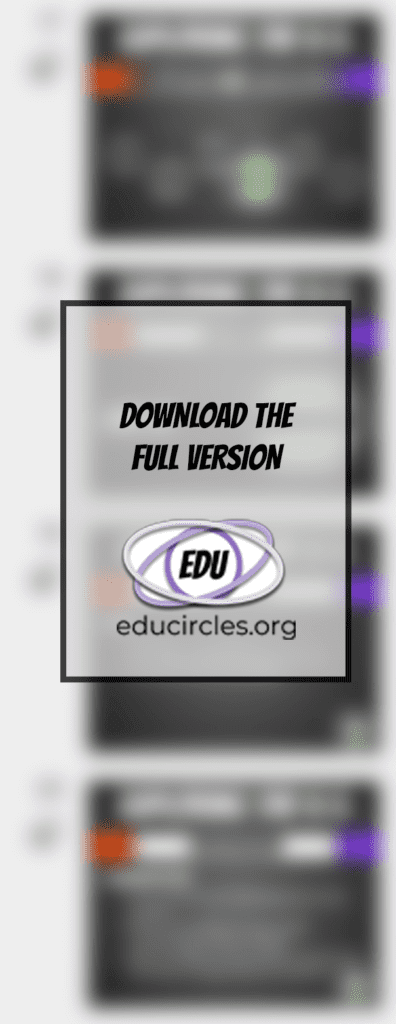
DOWNLOAD THE FULL VERSION to unlock this activity.
ICE BREAKER ACTIVITY – 5. Creativity

DOWNLOAD THE FULL VERSION to unlock this activity.
ICE BREAKER ACTIVITY – 6. Critical Thinking

DOWNLOAD THE FULL VERSION to unlock this activity.
ICE BREAKER ACTIVITY – Debrief / Discussion
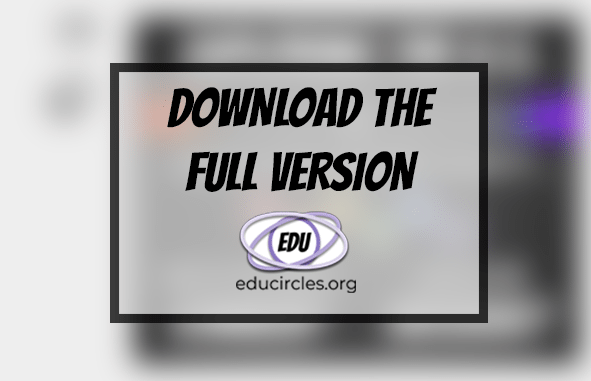
DOWNLOAD THE FULL VERSION to unlock this activity.
Want a sneak peek at the google slideshow for this lesson?
NOTE: Remember, this Google Slideshow is just a preview of the Character Icebreaker lesson. If you want the complete lesson plan and presentation, please visit our TpT download site.
Download the full lesson!
The complete lesson plan and slideshow presentation is available on our TpT download site.
Here’s what you get in a pretty zipped file: